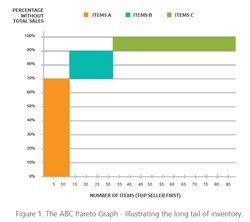
Knowing the age of my refrigerator, I figured finding a replacement part was going to be difficult and expensive and delivery would take weeks. Well to my surprise, I fired up the Google machine and, using the manufacturer and model number, I quickly found a company that specializes in providing genuine obscure OEM parts. The site listed all the parts for my refrigerator, described the symptoms of a failure of each part, provided schematics and video tutorials on how to replace the part, and provided user testimonials on their experience replacing the part. I needed a Dispenser Control Board and it was in stock. The board could be delivered to my house in an estimated 1.8 days (to be precise) for a premium charge. Now, being a supply chain person, I ask myself, just how much inventory does this company have to maintain to have a part for a 17-year old refrigerator sitting on the shelf and ready to ship? How do they plan for this type of part and how could they ever make money in this type of business?
After a bit of research I found out that consumers and businesses in the United States spend more than $700 billion each year on spare parts and services for previously purchased assets, such as automobiles, industrial machinery, and yes, 17-year old refrigerators. On a global basis, spending totals more than $1.5 trillion annually. Even more impressive, the profit margins on spare parts can be as much as 10 times that of the initial product sale. However, even at those margins how does a spare parts business minimize the inventory they need to carry for what I can only assume is very intermittent demand on hundreds of thousands of items?

To provide the type of service customers expect (i.e., delivery in 1.8 days) requires dozens of facilities stocking tens of thousands of items many with intermittent demand. The complexity of profitably planning that my 17-year old refrigerator would need a Dispenser Control Board requires advanced software. These long-tail inventories create especially difficult planning challenges that require more than spreadsheets or basic inventory planning through an ERP system to solve.
I am happy to say that the Dispenser Control Board arrived quickly and by utilizing the service part supplier’s on-line tutorials, and videos the board was successfully installed. I now have a refrigerator that dispenses both crushed and cubed ice again. One more items to check off my “Honey-Do” list.
Find out more about the impact of long-tail inventory and how advanced supply chain planning helps companies profitably optimize their supply chains in the white paper, “Driving Value in the Service and After-Market Parts Supply Chain – Taming the Long-Tail of Inventory.”
Does your company offer long-tail products? Do you have the solution capabilities you need to manage these slow move items that display an intermittent demand pattern?



